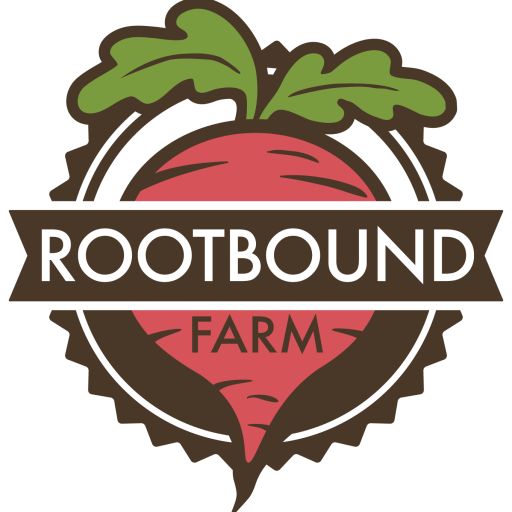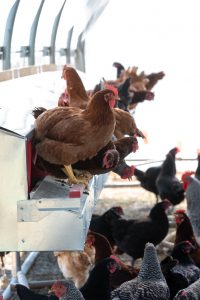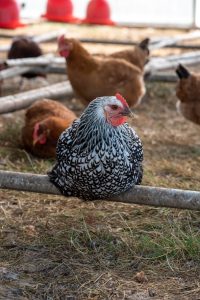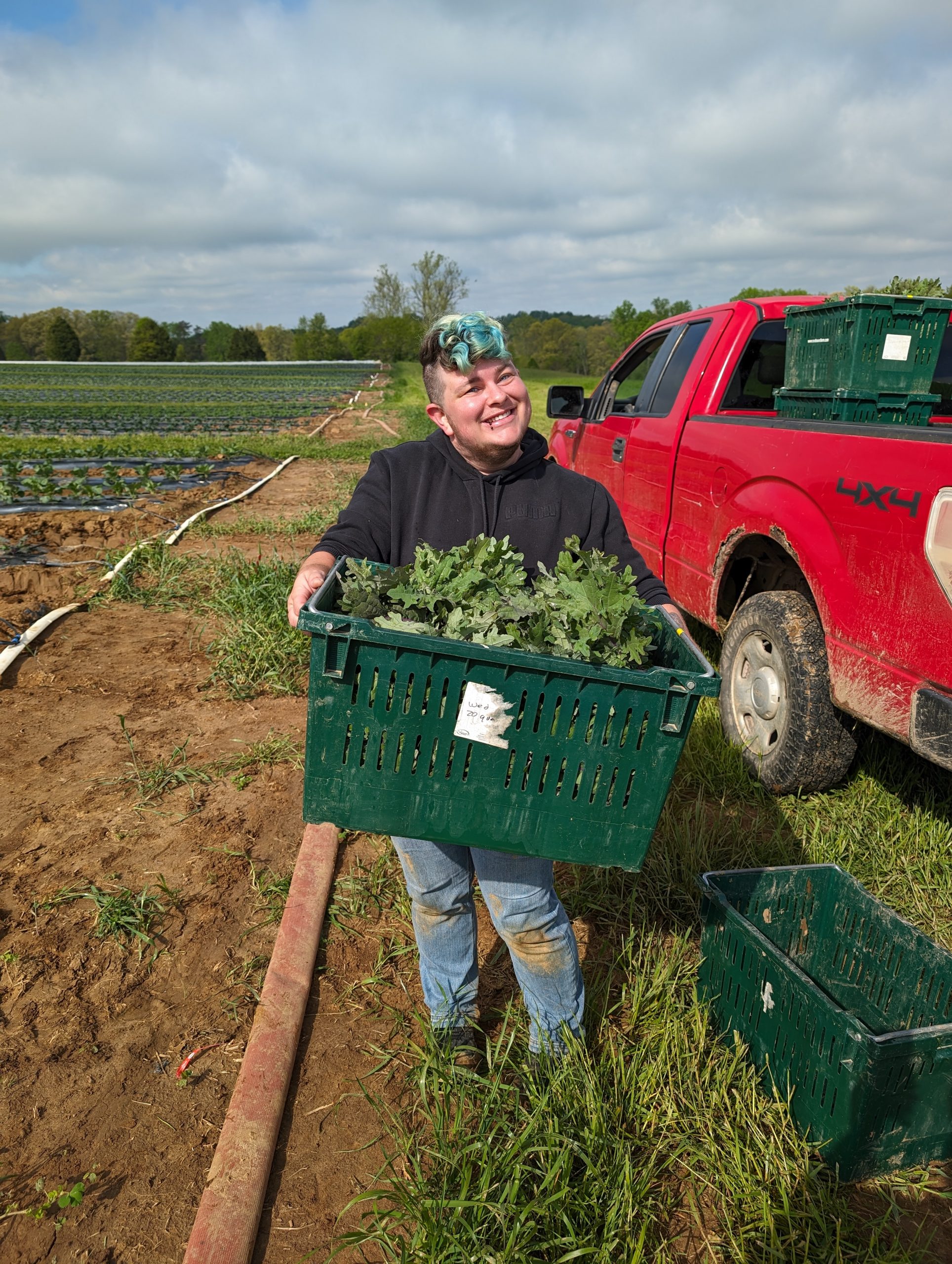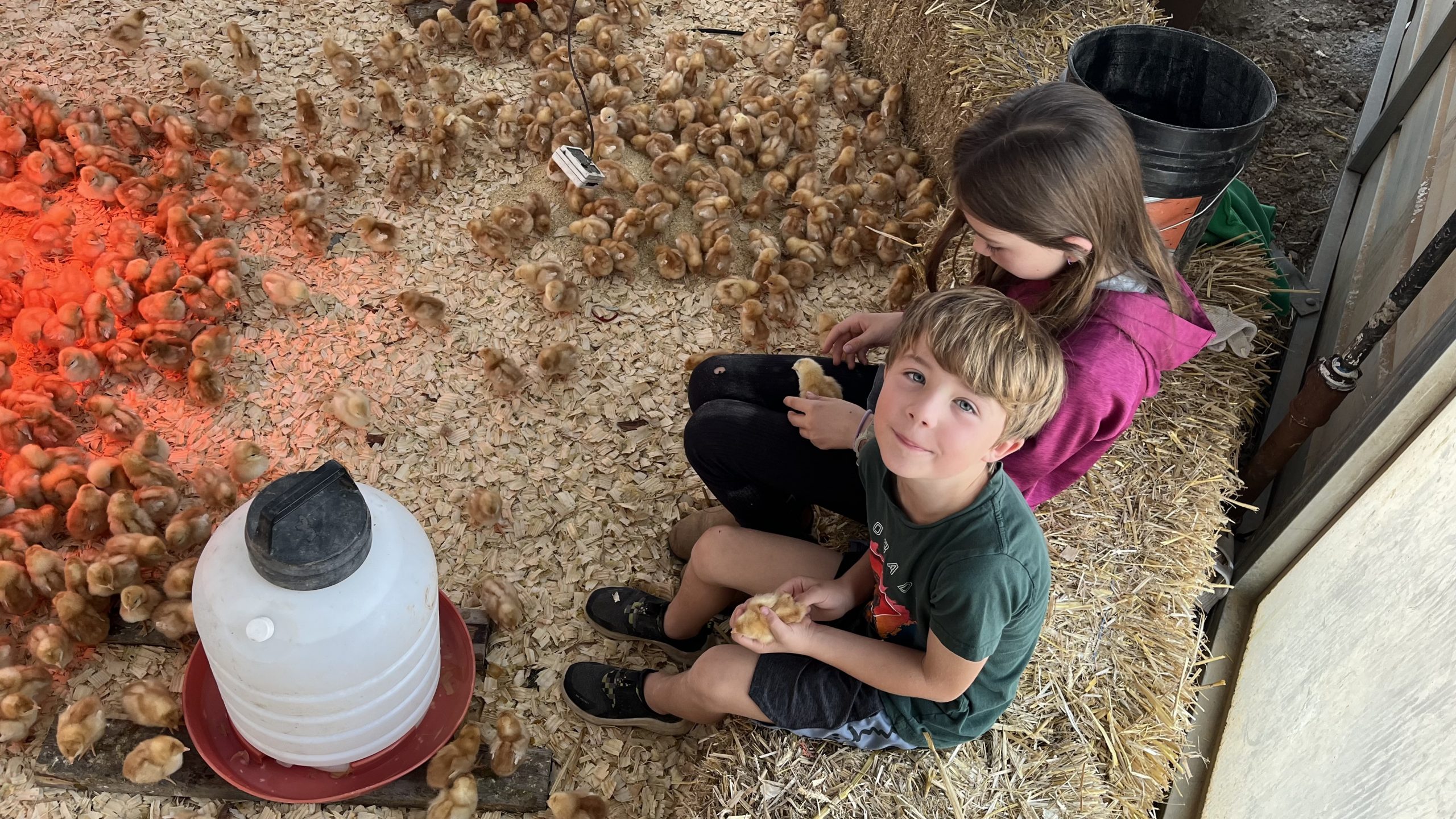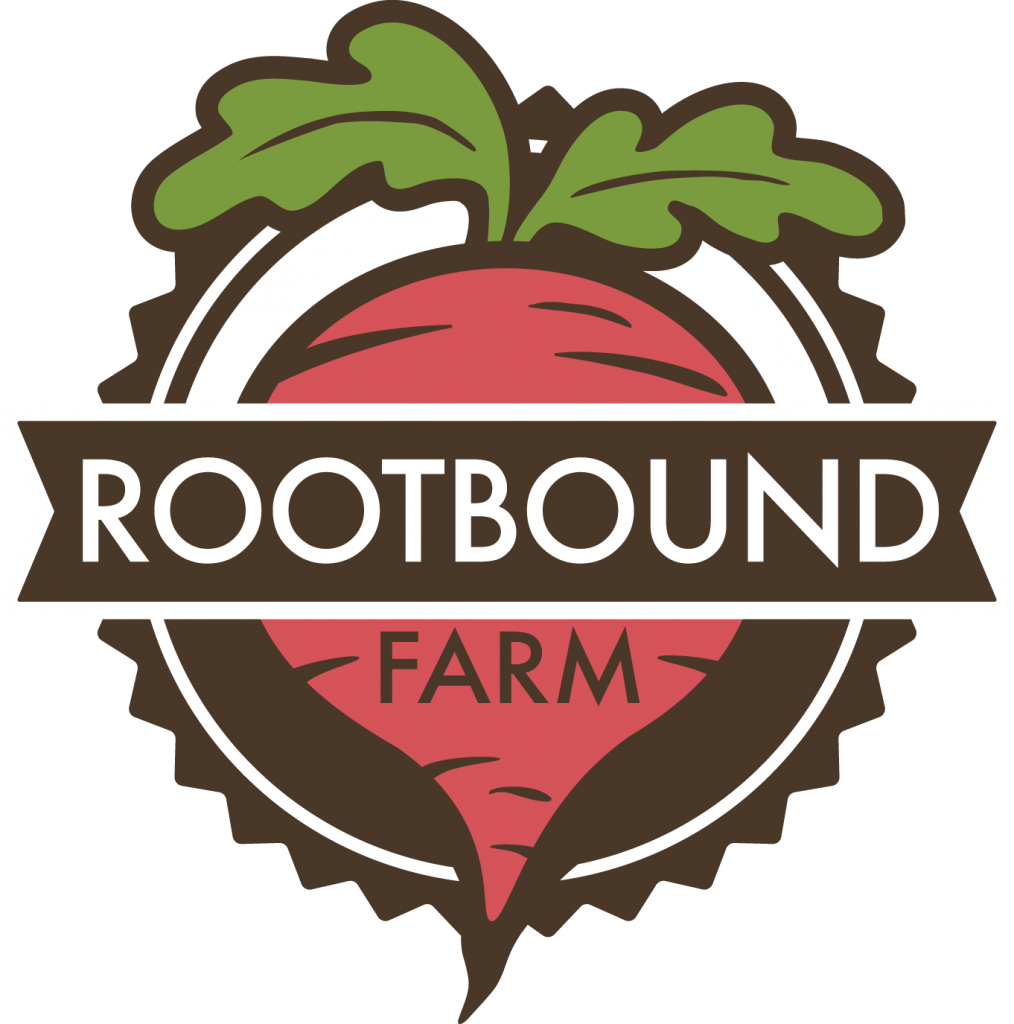Which came first? The chicken, or the egg? At Rootbound Farm, the chicken(s) most assuredly came first. Today Bree gives you a look into the life of chickens on the farm.
We raise about 400 hens including 5 different chicken breeds at Rootbound: Australorps, Rhode Island Reds, Barred Rocks, Wyandottes, and New Hampshires.
Our Chickens are free-range, REALLY free range. They spend their whole lives outdoors. We have a hoop house coop that provides a shelter from sun and the elements with nest boxes and places to roost and rest, but their feet are always on grass. We move their mobile coop every week so they can fertilize the land and access fresh pasture. Chickens bring a lot of benefit to the soil. Their little feet and pecking are constantly aerating the soil and their poop is rich in nitrogen – a needed soil amendment in organic veggie production. The chickens help replenish the soil for what we take when we grow veggies.
Chickens require supplemental feed beyond what they forage in the grasses. Like pigs, they can’t live on a diet of forages (grasses) alone. Ruminants (deer, sheep, goats, cows) on the other hand, can thrive on a diet of forages – although they are not usually managed that way in the modern industrial food system. Most beef and lamb are fed grains like corn and soy to fatten them up more quickly. But I digress, let’s get back to chickens!
Our chickens range on grass but we also supplement their diet with a ration of certified organic feed. We all know the saying “you are what you eat.” Well you are also what you eat, eats. We think it’s important that the corn and grains that make up the chickens’ diet is not grown with synthetic chemicals and herbicides (and antibiotics and other things). 99% of the corn and soy grown in the US is grown with a cocktail of toxic chemicals that are weed suppressants, pesticides, and herbicides. By purchasing certified organic chicken grains, we know the feed was not grown with synthetic chemicals and are never GMO’s. Since we don’t grow our own chicken feed (yet!) it’s also important to us that the grains raised to supplement our animals is not grown in a way that degrades the environment on someone else’s farm. If it’s not an environmental practice we would do on our farm, then it’s not a practice we want to support in the supply chain for our animal feed.
These chickens live a good life. It would be more efficient to put them in little cages in a warehouse and control their movement so we could collect their eggs without having to deal with moving them around, chasing them back into the fence or rushing to close up the coop when the winds and rain comes. It would be more efficient to control their movement so they just spent their energy laying eggs and not playing around. In the race for cheaper food, farmers are often incentivized to do things the most “efficient” way as possible to produce cheap food – and animal welfare, environmental stewardship, and humane working conditions become disposable.
We really enjoy raising chickens on the farm and having eggs available as a protein for our customers. We like that we don’t have to transport them off of the farm or process them in outside facilities, they can live their lives out here on the farm. Eggs are also a fairly accessible and affordable protein – pound for pound compared to beef, pork, or even chicken, a pound of eggs can be more accessible as a protein source.
We hope you love the eggs as much as we do. The shells are harder, the yolks are yellow-er, and the egg is just all-round fabulous. Stay tuned, our next blog post will be a deep dive into some egg focused recipes!
